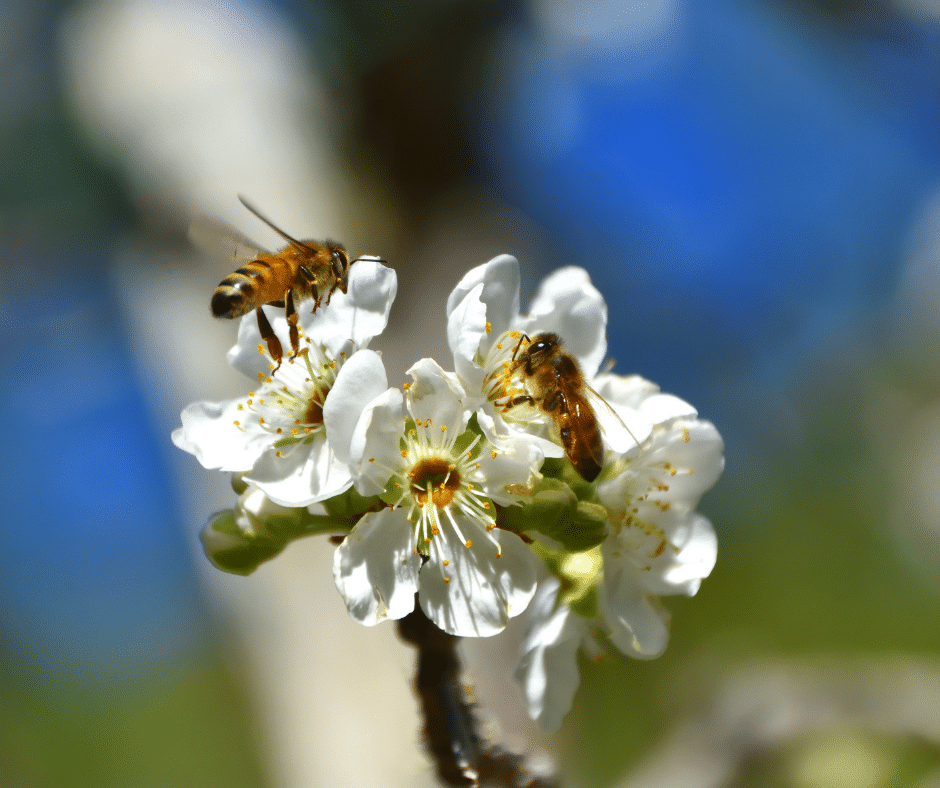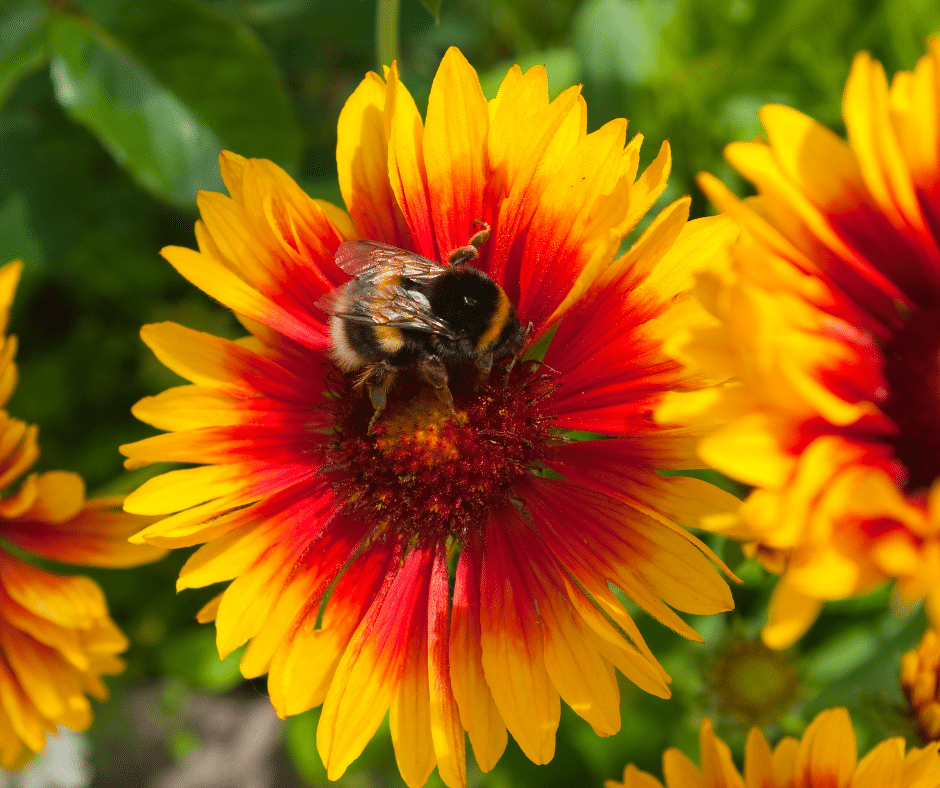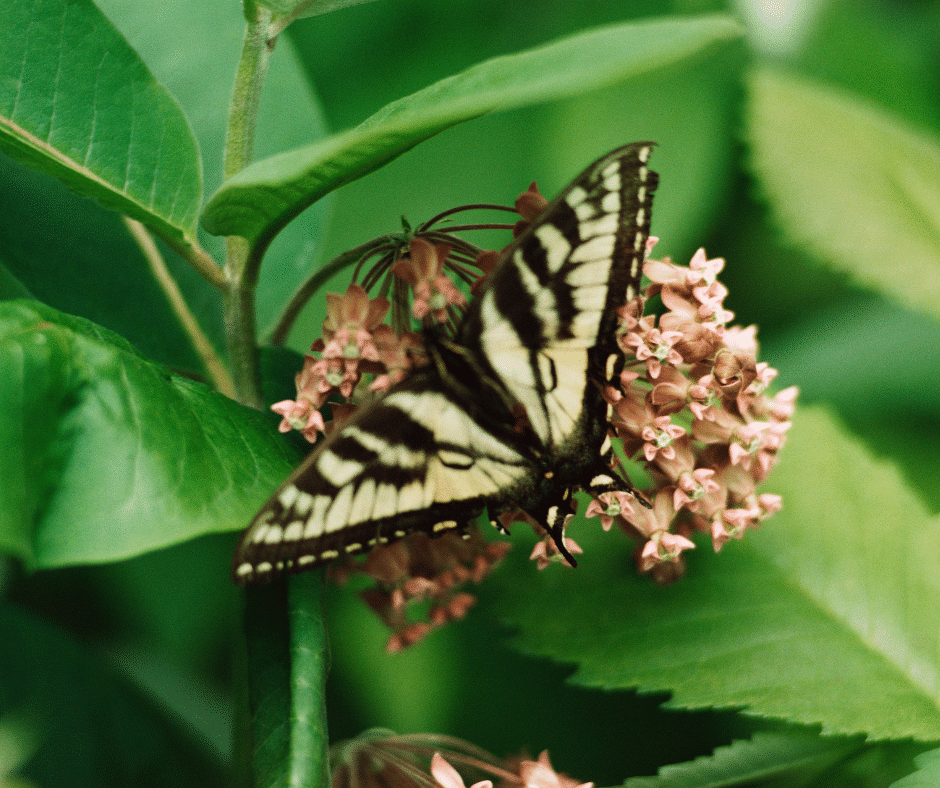A few simple steps will help pollinators survive and thrive in the garden. By planting different types of plants that flower at various times throughout the season, gardeners can provide food for pollinators all growing season long.
Make sure to consult your local Cooperative Extension office before planting any new plant, as some types may be invasive in certain areas of the country.

Below are some ornamental plants you can grow that support bees and other pollinators. They are organized by their blooming periods so you’ll know when to expect flowers throughout the growing season. Note that bloom time may vary depending on the climate of your region.
Early Spring (February – April)
Bee balm (Monarda didyma), columbine (Aquilegia canadensis), crocus (Crocus spp.), daffodil (Narcissus spp.), Dutch iris, winter aconite (Eranthis hyemalis).
Mid Spring (April – May)
American columbine (Aquilegia canadensis), aster family plants, bee balm, bleeding heart (Dicentra spectabilis), brunnera (Brunnera macrophylla), candytuft (Iberis sempervirens), catmint (Nepeta spp.), daffodil, daylily (Hemerocallis spp.), false indigo (Amorpha fruticosa), forget-me-nots, grape hyacinth (Muscari racemosum), grape hyacinth, Jacob’s ladder (Polemonium caeruleum), lavender, lily-of-the-valley (Convallaria majalis), lungwort, meadow rue (Thalictrum spp.), peony, primrose (Primula vulgaris or Primula auricula), purple coneflower (Echinacea purpurea), quaking grass, Siberian squill (Scilla spp.), snowdrop (Galanthus nivalis), spring-beauty (Claytonia virginica), winter daphne (Daphne odora).

Late Spring (May – June)
Bee balm, columbine, crocus, daffodil, daylily, forget-me-nots, foxglove (Digitalis purpurea), grape hyacinth, Jacob’s ladder, lavender lily-of-the-valley , lungwort, meadow rue, milkweed (Asclepias syriaca), pasque flower (Pulsatilla vulgaris), peony, purple coneflower, quaking grass, Siberian squill , Solomon’s seal (Polygonatum spp.), spiderwort (Tradescantia virginiana), violets, Virginia bluebells (Mertensia virginica), winter aconite.
Summer (June – August)
Alyssum, bee balm, catmint, dianthus, dill , echinacea, forget-me-nots, foxglove , gaura lindheimeri ‘Coronation Gold,’ hollyhock (Alcea rosea), lavender, larkspur (Consolida ajacis), meadow rue, Michaelmas daisy (Aster novi-belgii), monarda , morning glory (Ipomoea spp.), nasturtiums, New York ironweed (Vernonia noveboracensis), pasque flower, purple coneflower , rudbeckia, Russian sage (Perovskia atriplicifolia), salvia, sedum (Sedum spp.), Siberian squill, silphium (Silphium perfoliatum), spiderwort, statice (Limonium sinuatum), Texas bluebonnet (Lupinus texensis), verbena , Virginia bluebells, yarrow (Achillea millefolium).
Late Summer (August – September)
Alyssum, asters , bee balm, bellflowers (Campanula spp.), catmint, crocosmia , dahlia, dianthus , echinacea, evening primrose (Oenothera spp.), forget-me-nots, foxglove, gaillardia ‘Burgundy’, hollyhock , lavender, larkspur , meadow rue, Michaelmas daisy , monarda , nasturtiums, New York ironweed , pasque flower, purple coneflower , rudbeckia, Russian sage, salvia, sedum, Siberian squill , silver-king (oleander) tree dahlia (Dahlia imperialis), sunflower (Helianthus annuus), tithonia (Tithonia rotundifolia), verbena , yarrow.

Early Fall (September – October)
Aster, bellflowers , catmint, chrysanthemum , dahlia, dianthus , echinacea, evening primrose , forget-me-nots, gaillardia ‘Burgundy’, hollyhock , lavender, larkspur , Michaelmas daisy, nasturtiums, New York ironweed , pasque flower, phlox (Phlox paniculata), purple coneflower , rudbeckia, Russian sage, salvia , sedum, Siberian squill , sunflower, tithonia , verbena, yarrow.
Winter (November – February)
Amaryllis, basket of gold (Aurinia saxatilis), bear’s breeches (Acanthus spinosus), curly kale , cyclamen, daffodils , English holly hawthorn ‘Crimson Cloud,’ hellebore, hyacinth, lily-of-the-valley , myrrh (Commiphora myrrha), poinsettia, potted narcissus ‘Grand Primo,’ snowflake (Leucojum spp.), winter aconite, witch hazel (Hamamelis vernalis).

Why Grow Plants That Attract Pollinators?
People are often surprised to find out how many plants – especially perennials – produce an abundance of flowers renowned for their aroma, but also bees are attracted to these sweet-smelling plants for their pollen. Once the blooms have gone by, these plants will still be covered in nectar-filled blossoms that can attract other pollinators, including butterflies and hummingbirds.
Planting a garden with brightly colored blossoms is not only beautiful but attracts all types of pollinators that contribute to our local eco-system. You may even want to include some trees around the outside edges near lawns or flowerbeds because trees provide habitats for many insects including native bees.
Helping pollinators is important for the sake of flowers, food sources, and our ecosystem. We truly hope that the information shared above today will help encourage you to grow more plants to help pollinators in your local region!
